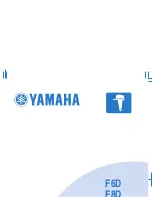
Ultra PicoKeyer
27 January 2017 (Firmware V2.2)
Page 5 of 21
hear
/R
instead of the word to be repeated.
To store a slash character in a message, save it as //.
For example, if
I want the message to send N0XAS/B I’d store it in memory as N0XAS//B.
/R
will repeat the last word, including the word space after it. This can save a lot of memory space, since each
/R
takes up only two character positions in memory. For example, to send a 3x3 CQ, you can simply store
“CQ
/R/R
DE (call sign)
/R/R
K”. This can save a lot of memory space.
/1
,
/2
,
/3
… /8
can be used to “call”, or insert another stored message as part of the one you’re recording. The
indicated message will be played immediately when one of these commands is encountered, then the current
message will resume.
/P
will pause the message. This will cause the keyer to wait while you manually send information such as a
signal report or other comment. The message will automatically resume after a full word space has passed with
no paddle input.
Hint:
If you use /P, store it immediately following the preceding characters without a word
space. In other words, store “UR RST
/P
…” instead of “UR RST
/P
…”. This prevents you starting to send
before the word space completes, which will terminate memory playback completely. If you want to terminate
a message while it’s paused so it won’t resume, simply tap any message button.
To have your message automatically repeat at timed intervals, insert the command
/B
(BEACON) at the end of
your message. This will cause the keyer to delay for the number of seconds set with the B parameter (see the
setup menu instructions) and re-send the message. You can terminate beacon operation by tapping either
paddle or any button. This can be especially useful for calling CQ, or to use your PicoKeyer to control a
propagation beacon or “fox” transmitter.
To have Message #1 automatically start whenever power is applied to the keyer, store the
/A
command as the
first two characters in message #1. This is useful for automatically starting a keyer used as part of a beacon
station. Remember that you will still need to use
/B
at the end of the message if you want it to repeat.
To send the QSO number and increment it by one, send
/QI
(QSO & Increment).
To send the QSO number and NOT increment it, send
/QN
(QSO & No increment).
To the last (previous) QSO number, send
/QR
(QSO Repeat). This is useful during contests if you need to send
a “fill”.
To temporarily
increase
the keyer speed by one WPM, send
/SU
(Speed Up). Note that this and the
/SD
command will take effect immediately and will remain in effect only until the message is finished. You can
store multiple /SU or /SD commands to change speed by more than one WPM – for example,
/SU/SU
will
increase your speed by 2 WPM.
To temporarily
decrease
keyer speed by one WPM, send
/SD
(Speed Down). This command works exactly the
same as /SU. /S or /S0 will resume normal speed.
To temporarily
set a specific speed
, send
/Snn
where
nn
is the speed you want. /S or /S0 will resume the
normal speed. For example, to send a signal report at 30 WPM and return to the normal speed you would use
/S30 599/S0.
To set
QRSS mode
, send
/SQnn
where
nn
is the number of seconds per dot. /S or /S0 will cancel QRSS
mode. Example:
/SQ3
DE N0XAS
/S0
will send “DE N0XAS” with 3-second dots.
To alter the
letter spacing
, send
/Fn
where
n
is one digit, 0 through 9. This will act the same as setting the
letter spacing in the menu. For example, say you want to add a little extra space between letters in your call
sign in a CW message. You could store, “CQ
/R/R
DE
/F2
N0XAS
/R/R
K
/F0
/B”.
To insert an extra
word space
in your message, use the special prosign character “
1M
” (.------).
To insert a steady
carrier
, use the /C
n
command, where
n
is the number of seconds (from 1 to 9) that you wish
to send the carrier.
To insert the contents of a
MYCALL
message, insert the command
/Y, /Y1 or /Y2
. /Y or /Y1 will send
MYCALL #1; /Y2 will send MYCALL #2.






































